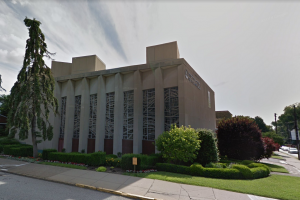About 2 hours after it was uploaded on April 16, Facebook deleted a video depicting the murder of 74-year-old Robert Godwin Sr., a subsequent live stream, and the account belonging to Steve Stephens, the Cleveland man police are searching for in connection with the murder.
“This is a horrific crime and we do not allow this kind of content on Facebook,” a spokesperson said in a statement to Grasswire. “We work hard to keep a safe environment on Facebook, and are in touch with law enforcement in emergencies when there are direct threats to physical safety.”
The incident is the latest example of how social media companies are finding themselves as gatekeepers for content. In December, a 12-year old girl in Georgia broadcast her suicide on Live.me, and the video was subsequently posted to Facebook, YouTube and other social networking sites for weeks as police tried to have it removed.
On July 6, Diamond Reynolds live-streamed a the shooting death of her boyfriend Philando Castile by a Minnesota police officer during a traffic stop. The officer, Jeronimo Yanez, was later charged with second-degree murder.
Despite reports, Facebook said Stephens did not live-stream Godwin’s murder on Sunday.
The company told Grasswire that its content standards for the rest of the platform also apply to Facebook Live, its live video feature, but said context is key when it comes to users broadcasting graphic violence.
According to a Facebook representative, situations where a person is condemning or raising awareness to potentially offensive content are allowed though a warning may be placed on the video or the visibility reduced to adults only.
Extremely graphic videos, such as beheadings, or videos shared to glorify violence are removed.
The representative explained Facebook’s process for removing videos that violate community standards:
Once a user reports a piece of content – whether it’s a post, page, live video, or profile – it’s reviewed by a global Community Operations team member and removed if it violates their standards. If there’s a credible threat to someone’s safety, law enforcement is notified.
Facebook said it aims to interrupt live streams as soon as possible when they’re reported if they violate the company’s community standards.
The goal is to have the “right number” of people with the right language capabilities to understand the context of what is being said to ensure that reports are reviewed quickly, efficiently, and accurately, the representative said.
In the Stephens case, Facebook said on Monday that the shooting video was uploaded at 2:11 p.m. EDT. Stephens’ live broadcast, wherein he confessed to the murder, began at 2:22 p.m. and lasted for five minutes.
The live video was first reported shortly after 2:27 p.m., and the video was first reported about 90 minutes later, at 3:59 p.m. By 4:22 p.m., Stephens’ account had been disabled and none of his videos were publicly visible.
Grasswire has reached out to Twitter and YouTube for comment.
–reporting by Andrew Okwuosah




